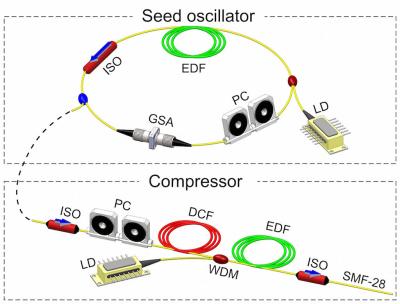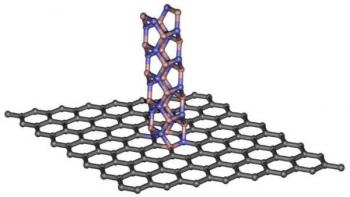Graphene enables ultra-fast optical fibre laser for spectroscopy and medical applications
Graphene Flagship researchers have developed a graphene-based optical fibre laser that emits pulses with durations equivalent to just a few wavelengths of the light used. This is said to be the fastest device ever created, and should be ideal for use in ultrafast spectroscopy, as well as in surgical lasers that avoid heat damage to living tissue.

Time resolution is limited by the length of the laser pulse used. The shorter the pulse, the higher the spectroscopic resolution, with the highest possible resolution defined by the cycle length of the particular light frequency employed. In the visible and near-infrared regimes, in which most ultrafast lasers operate, the ultimate pulse duration is between 2 and 5 femtoseconds. Shorter pulses require shorter wavelengths. Pulses as short as two cycles can be generated from laser cavities using a technique known as passive mode-locking.


